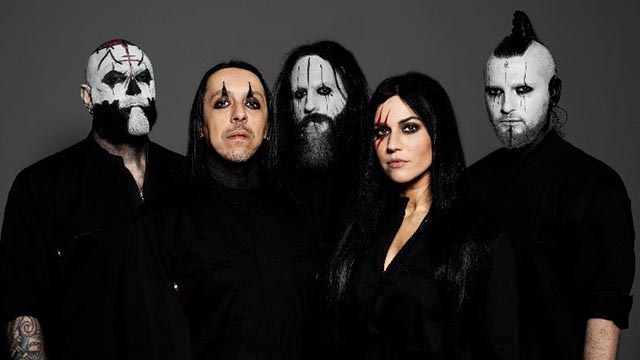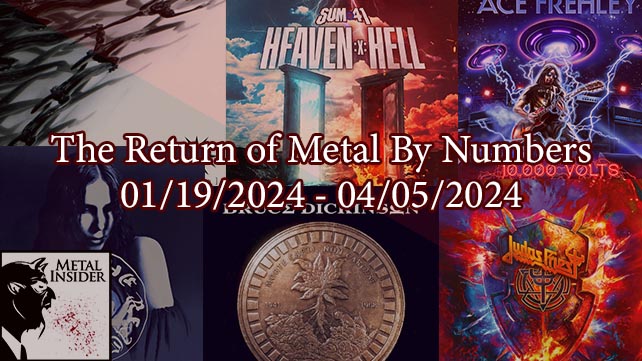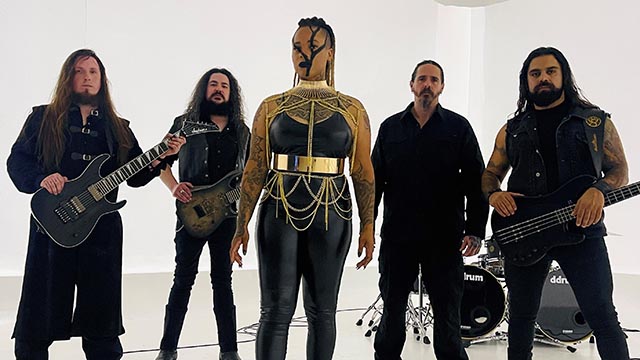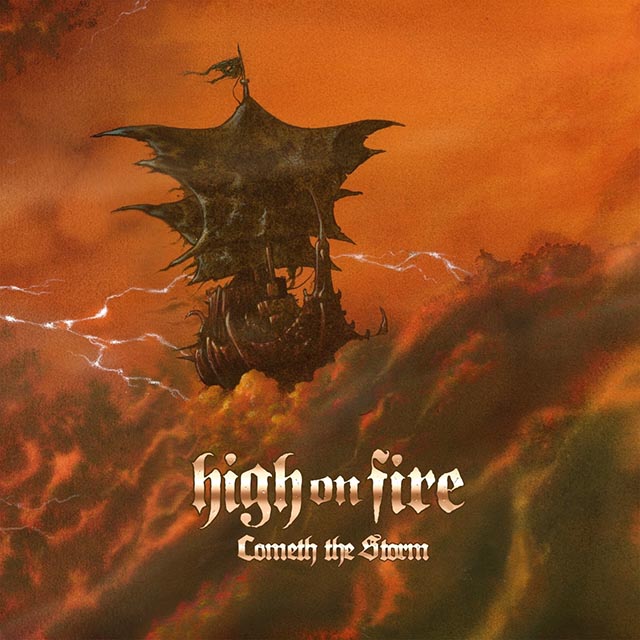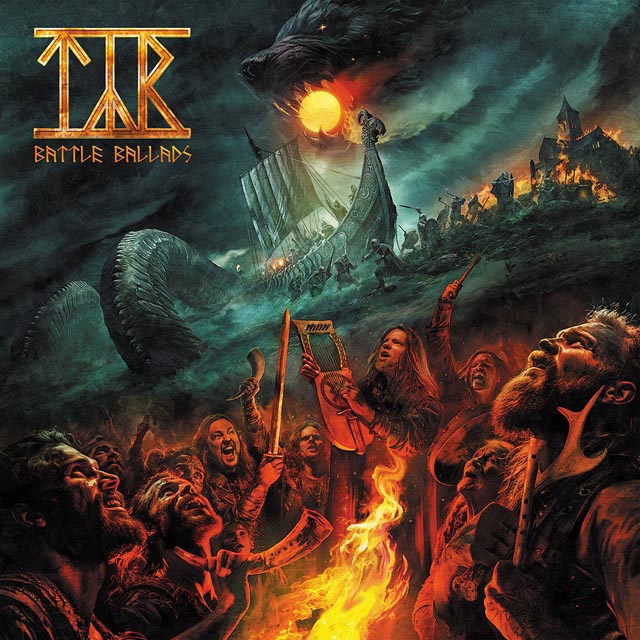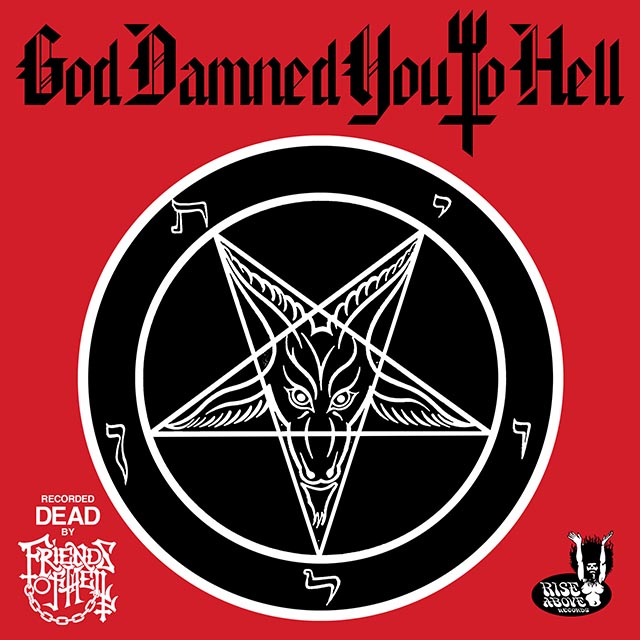 As the worldwide metal community celebrates the 30th anniversary of Metallica’s Master Of Puppets, I’ve realized just how much in the last few weeks we’ve been inundated with news and visibility of the entire Big Four. Along with Puppets’ birthday, Slayer’s headlining tour with Testament and Carcass is in full swing, Anthrax’s glorious new platter For All Kings scored stellar first-week release numbers while the current Megadeth tour supporting their recent #1 album Dystopia is selling out everywhere. Whether or not you’ve stayed on board with these metal kings throughout their careers, it’s still pretty fucking cool to see them thriving and influencing younger generations to this day. They earned their marks more than most other bands, and fought harder for their successes and achievements. While enjoying lots of youthful memories surrounding these bands recently, it’s also been interesting to look back and compare how underground metal bands gain attention now as compared to three decades ago.
As the worldwide metal community celebrates the 30th anniversary of Metallica’s Master Of Puppets, I’ve realized just how much in the last few weeks we’ve been inundated with news and visibility of the entire Big Four. Along with Puppets’ birthday, Slayer’s headlining tour with Testament and Carcass is in full swing, Anthrax’s glorious new platter For All Kings scored stellar first-week release numbers while the current Megadeth tour supporting their recent #1 album Dystopia is selling out everywhere. Whether or not you’ve stayed on board with these metal kings throughout their careers, it’s still pretty fucking cool to see them thriving and influencing younger generations to this day. They earned their marks more than most other bands, and fought harder for their successes and achievements. While enjoying lots of youthful memories surrounding these bands recently, it’s also been interesting to look back and compare how underground metal bands gain attention now as compared to three decades ago.
Today we regularly see extreme bands using the same promotional vehicles as those of more commercial appeal, and in a lot of cases with more financial backing. Metal record labels themselves diversified many moons ago, and today bands who are completely independent of all company ties are mostly presented the same methods of exposure (for the right prices) as those who are a part of a much larger entity. Obviously, that was not the case 30 years ago.
The Big Four bands (and the underground icons who came after) had to find their own way and cut their own path to international stardom through the barrage of successful and already established worldwide acts of the late ‘70s and early ‘80s, as commercial eyes and ears hadn’t quite yet warmed up to thrash, death and crossover metal and their more radical fan bases. March 3rd, 1986 changed that with the unleashing of Puppets, first and foremost. And for metal fans in America especially, a stylistic fork in the road would appear as the underground would rise to do battle with the bigger players in the commercial realms of sales and promotion. You didn’t need to be there physically in 1986 to understand the importance of the year; the music has of course survived whereas thousands of its fans and artists have not. Aside from three of the Big Four releasing what would arguably be their greatest achievements (Megadeth’s Peace Sells But Who’s Buying and Slayer’s Reign In Blood were released in September and October respectively) there is a stunning list of amazing and still relavent records that came out during that landmark year. It also marked the first year that the bigger underground artists would rack up similar sales numbers to the bands who’d already enjoyed mainstream success.
The majority of Metal’s popularity in the US between 1983 and 1985 was a collective groundswell when it came to the major record labels’ marketing tactics. Arena acts like Ozzy Osbourne, Scorpions, Iron Maiden, Judas Priest, Dio, Accept, Krokus, Quiet Riot and Motley Crue achieved gold and platinum status already while all being presented on similar promotional platforms in magazines, on radio stations and (of course) early MTV. The industry was simply hanging on and trying to keep up as the music, culture and lifestyle burned out of control and gained fans at almost a disco-like pace. Longtime rock magazines like Circus and Hit Parader had converted almost exclusively to covering commercial metal big sellers, and by that time you found those publications in just about every grocery store in every small town in America. Although the nationally syndicated Metal Shop radio show with host Charlie “The Butcher” Kendall did give some exposure to younger, more independent bands, the show was made up mostly of bigger names and was being picked up weekly by commercial radio stations across the country (well more than 200 total would join during the show’s peak years). MTV was still finding its foothold with heavy metal fans as the Headbangers’ Ball hadn’t launched yet (that would come in 1987) and the channel was still playing metal videos mostly in blocks or at random non-prime times. The only regular MTV shows for the Metal genre were Dee Snider’s “Measure Of Metal” countdown and “Heavy Metal Mania” shows which didn’t run regularly until 1986. So although metal’s exposure was increasing in all commercial mediums, the genre was still a singular movement for the mainstream US masses.
Underground fans were always more prideful, more vocal and more proactive about their favorite bands and releases. Instead of being told what was good and what to buy, they took it upon themselves to be those portals and become movers and shakers. Independent record stores (who in many cases were just a fan or two who were importing and doing their own bulk mail orders directly from the smaller labels) were becoming more prevalent in bigger markets, as well as independent metal “sections” in the more major-chain retailers. Also by the mid-80s, college metal radio shows began popping up in most States, tape trading became a major international network of promotion, and burgeoning fanzine’s like Kick Ass Monthly (Bob Muldowny, R.I.P.) and Metal Mania (Ron Quintana) added more firewood for underground and fan-to-fan exposure by personally getting in touch with and interviewing band members. At the same time, overseas underground metal magazines such as Kerrang, Aardschok and Metal Forces began seeing their way onto US racks (which is where a majority of fans like myself would discover new bands and releases). All in all, a wide range of newer and more exciting metal bands were becoming immensely popular in the US and began to run neck and neck with some of the genre big hitters who had gotten their start long before.
By 1985 Stateside indie labels such as Metal Blade, Megaforce and Combat had seen a few years of successful releases and momentum, but none of them had the financial reserves to go toe-to-toe with the majors as far as marketing, manufacturing and palm greasing dollars. Slayer’s Hell Awaits, the final release for the band on Metal Blade, was immensely popular in the underground as was Megadeth’s debut Killing Is My Business… on Combat, and both acts were receiving attention well beyond the peers on their labels. Although Megaforce’s contract with Metallica was bought out from Elektra records soon after the initial release of Ride The Lightning in 1984, label owner Jonny Z still needed a bigger vehicle to promote his own moniker and further the awareness of the band’s still under contract. A distribution deal with Island Records upped the visibility, the hype and the number of records shipped for Anthrax’s Spreading The Disease when it launched in October of 1985. Metal Church was also signed to Elektra (apparently with the advice of James Hetfield and Lars Ulrich) and reissued their debut album in 1985, but the label failed to really promote the band above an underground status until their second album The Dark the year after. The release of Master Of Puppets helped change all that perception, as all of a sudden an album that was deemed so dangerous by so many had the same production budget and promotional backing as many platinum commercial bands before them. Seeing the live photo on the album’s back cover of the band playing Oakland’s Day On The Green festival was enough to solidify that Metallica had arrived in the major leagues, and of course opening for Ozzy’s Ultimate Sin US Tour March-August of ‘86 pushed them through that threshold and into a commercial spotlight. It also helped that the band themselves openly stated that they would have written and released the exact same album if they were still supported by an independent label. Megadeth’s Peace Sells… got similar major-label support later as Capitol Records bought the rights to co-release the album with Combat (they soon after netted the opening slot for Alice Cooper’s The Nightmare Returns Tour), while Def American and Rick Rubin would sign Slayer and roll the dice with Reign In Blood (looking back it’s hard to think that was much of a gamble). The gold-lined avenues of exposure that had before eluded these bands were now afforded to them, and their global domination would ensue.
But just as the Big Four began to infiltrate the Billboard Charts, the debut albums from Poison, Cinderella and Tesla also garnered impressive audiences and American dollars. This lighter side of young Metal in 1986, with some massive help from Bon Jovi’s multi-platinum third album Slippery When Wet and Europe’s US breakthrough, The Final Countdown, cleared a path to what would become the hair metal phenomenon. A Yin and Yang effect had taken over the metal genre on its major promotional fronts, as younger commercial and underground bands battled each other stylistically while simultaneously pushing the entire genre forward. Much like a Ronnie James Dio lyric, a Darkness/Light or Positive/Negative promotional aspect was now added to the incumbency of metal bands of the time and became a viable deterrent in how fans purchased new albums and discovered new music. So while Dark Angel, Nuclear Assault and Flotsam & Jetsam enjoyed releasing their debut offerings of Thrash to underground diehards in 1986, albums from Stryper, Vinnie Vincent and Ratt were jumping off the shelves in droves to more mainstreamers at the same time. For someone like me who purchased Reign In Blood and Rough Cutt’s Wants You on the same day, it was a pretty freakin’ glorious time for heavy metal to say the least. In the years to follow this dichotomy would further develop, as more indie/major label deals would help underground bands sell big time numbers (Megaforce/Atlantic, Metal Blade/Warner Brothers and in the early ‘90s the crucial Earache/Columbia deal) while commercial radio and press would welcome more “hair bands” into the fold. Those who were stylistically stuck in the middle of the underground and commercial worlds (Savatage, Armored Saint and Warlock for example, all of which started in the independent world but whose style became more palatable on major labels) seemed to actually have a harder time amassing huge sales and wide audiences. Perhaps it was safer to stick with one path of The Fork or the other?
30 years later it’s nothing for Avenged Sevenfold to be spoken about in the same news column as Amon Amarth, or see a label like Century Media release the new Queensryche alongside new albums from Grave and Intronaut. These bands receive promotional backing and exposure that transcends their individual style and sound, as the heavy metal genre is more fragmented now than it’s ever been and bands are more apt to be adventurous with each release. But it was 1986 that saw the heavy metal Fork In The Road come into play promotionally for commercial and underground metal bands, and that alone will forever be an unforgettable mark for that coveted year. That and of course all the killer albums.


